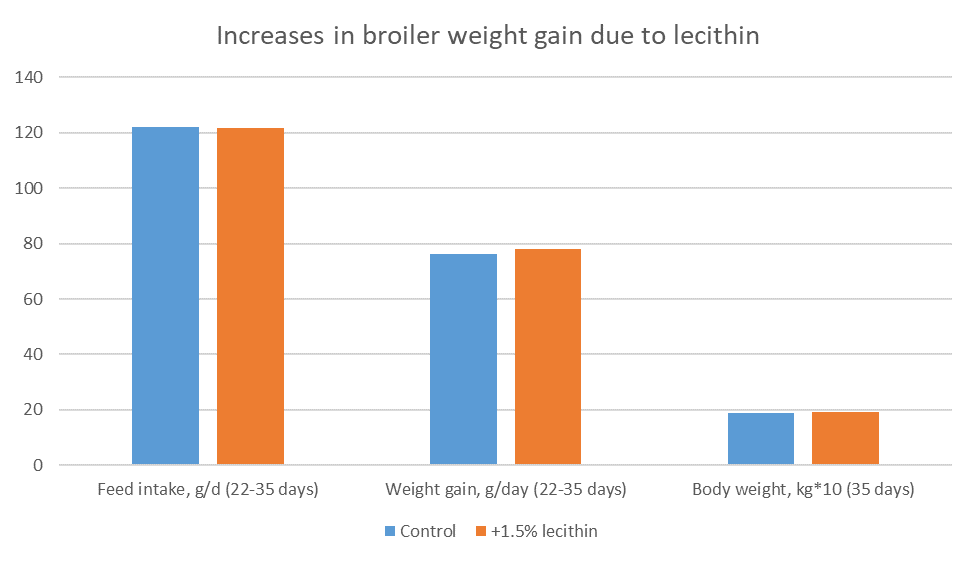Benefits of Higher Fat Diets: Part 4, What Comes Along with the Fat?

This is part 4 in the blog series on why higher fat diet formulations are beneficial and should be used in your program. For review, here are the others:
- Part 1 – defines higher fat (and that fats and oils are terms used interchangeably) diets for different species and indicates that everything in the blog series will deal with nudging fat and oil levels upward in a formulation, within ranges considered normal.
- Part 2 – beneficial effects of higher fat diets on intake and performance in poultry, swine, and dairy examples.
- Part 3 – explains fundamental, underlying reasons for the benefits of higher fat diets. Animals fed higher fat diets are actually physically different from those that are fed less fat.
So far, I’ve focused on how fat provides a concentrated form of energy in the diet; affects feed intake, performance, and efficiency; and improves the absorptive capacity of the intestine.
But, how else could more fat in the diet be beneficial? What else could come along with it?
We’ve discussed on the blog before how the method of processing and oil extraction will affect oil composition. The high-shear dry extrusion/mechanical oil pressing (ExPress®) process leaves vitamin E in the oil, both in extracted oil and the residual oil remaining in the meal. The solvent-extraction, hexane-based process for oil removal separates the oil from everything else, including vitamin E.
So, including ExPress® soy meal and oil in a formulation will also be adding a source of vitamin E, an essential, required nutrient.
ExPress® soy oil, either alone or within ExPress® soy meal, also contains lecithin, an emulsifier that helps mixtures dissolve and interact better with each other. It’s possible, then, that adding lecithin to a diet could help the digestive contents interact with each other, improve digestion, and aid performance.
There’s some evidence for this beneficial effect, as shown below with data from a study:

You can see that when lecithin was added to a broiler diet, weight gain was significantly improved. Also, feed intake declined numerically, while body weight was somewhat numerically higher. So, it’s possible that lecithin within dietary fat sources could be beneficial – interestingly, another study reported benefits due to lecithin as well.
It’s important to understand exactly how much vitamin E and lecithin are present in your particular fat source in order to be able to predict any potential performance benefits. However, it’s one more reason to use higher fat diet formulations.
In Part 5, I’ll make recommendations based on everything in Parts 1-4.



